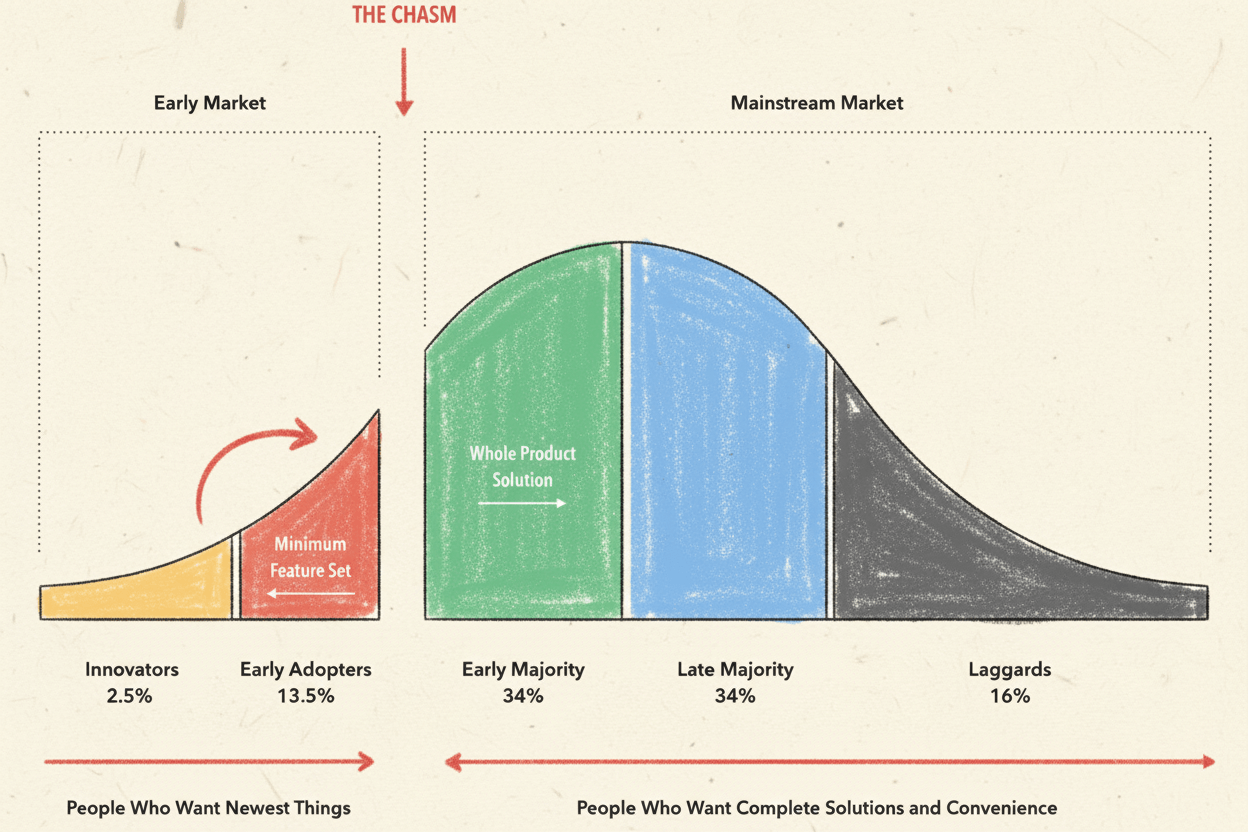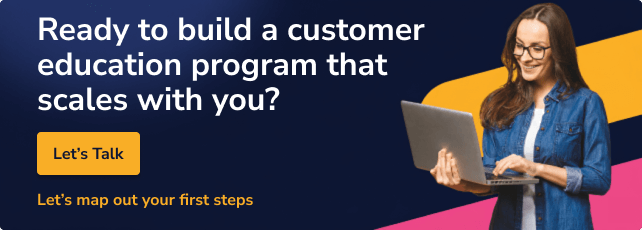still remember our earliest days building HowToo. Every hour felt like a tug-of-war for attention: fundraising pitches, product tweaks, sales calls, the relentless hunt for product–market fit. In that swirl of pressure points, one question kept resurfacing - when do we start thinking seriously about educating customers?
At first, it seemed like a “later” problem. Surely we needed to sign deals before we spent time teaching anyone how to use what we’d built. But the more customers we won, the clearer it became: education isn’t a “nice to have” that comes after growth. It’s a growth engine in its own right.
Why education matters earlier than you think
Today’s software is complex. Buyers want value fast, and if they can’t find it they’ll move on. Competitors are everywhere and customer expectations have skyrocketed. People don’t just want a tool; they want guidance, skills, and a path to mastery.
This is where Geoffrey Moore’s classic framework Crossing the Chasm comes to mind. Moore describes the perilous gap between early adopters, those adventurous first users, and the more pragmatic majority. To reach the mainstream market, you need to help those pragmatic buyers feel confident that they can achieve success without heroic effort. Customer education is one of the surest bridges across that chasm.

And we see this play out all the time. We now work with a lot of fast-growing scaleups who openly say they wish they’d nailed their customer education earlier. Instead of scrambling to retrofit learning programs during hypergrowth, while support tickets pile up and churn creeps in, they could have been building advocacy and efficiency from day one.
Before the sale: educate to attract
Think of an ‘educated lead’ as someone who already understands what problem you solve before they ever speak to sales. When prospects have self-served through tutorials, webinars, or bite-sized learning, conversations move faster and deeper. Trials become more meaningful too as you can shape the journey so people explore features in manageable steps instead of getting lost.
During onboarding: scale without burning out your team
Well-designed learning paths let customers guide themselves through setup and early wins. That means fewer frantic calls for your success team and lower acquisition costs because you can onboard more accounts simultaneously. It also reduces churn risk, since those first experiences are critical. Channel partners (distributors, resellers) benefit in the same way. The quicker they’re trained and confident, the more they can sell and support on your behalf.
After the sale: turn buyers into champions
Signing the contract isn’t the finish line. Without ongoing education, customer success teams become reactive firefighters. Proactive training, certifications, advanced courses, user communities helps customers unlock new value and share wins with peers, creating advocates who stay longer, spend more and refer others.
For any startup juggling a hundred priorities, the temptation is to postpone this work. My advice: don’t. Start small if you need to, record a simple walkthrough, write a quick-start guide, but start early. Customer education isn’t an afterthought. It’s the bridge that carries you and your customers safely across the chasm from promising idea into an enduring business.













